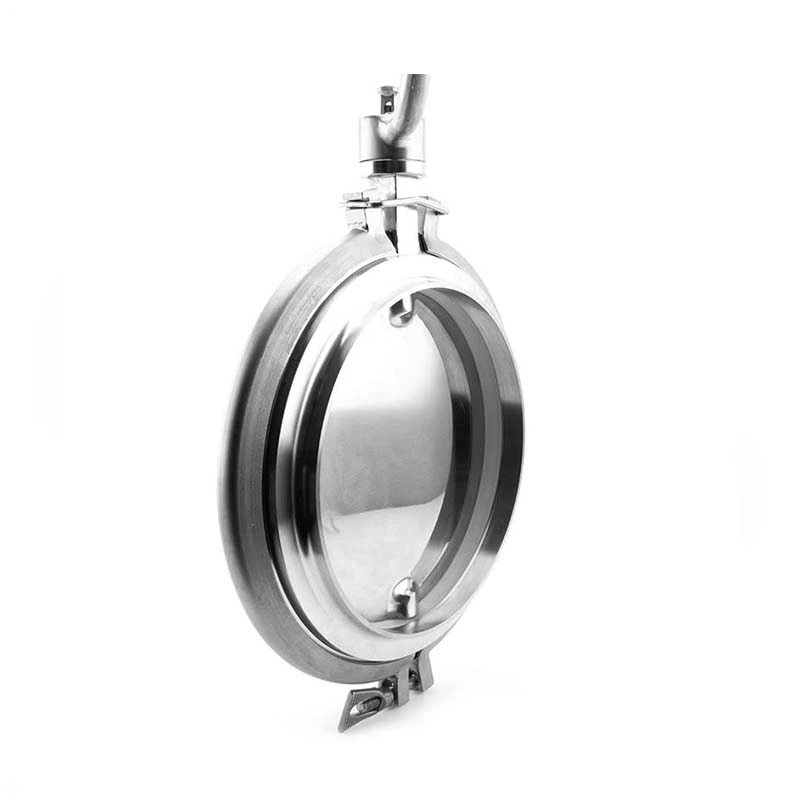Installation Requirements And Characteristics Of Sanitary Butterfly Valves
Sanitary Butterfly Valve Installation requirements
Before explaining the installation requirements of sanitary butterfly valves, let's first understand the various connection methods of sanitary butterfly valves, namely quick-install, flange, thread, welding, etc. In order to better distinguish and facilitate purchase, they are usually named by the connection method, such as: quick-install butterfly valve, flange butterfly valve, welded butterfly valve, etc.
Installation requirements of sanitary butterfly valves
The most cumbersome installation is the welded butterfly valve. The butterfly valve needs to be disassembled before installation to avoid excessive temperature during installation to damage the butterfly pad and affect the sealing; the most convenient is the quick-install butterfly valve. If the pipeline is already equipped with a chuck, it only needs to be clamped with a clamp.
In addition, when installing a sanitary butterfly valve, it is also necessary to consider whether the handle is convenient to use. For example, when installing a butterfly valve on a pipeline close to the wall, the length of the handle must be fully considered to avoid the valve core from being unable to fully open or fully closed, resulting in leakage.
The main features of sanitary butterfly valves are:
1. Small and light, easy to disassemble and repair, and can be installed at any position.
2. Simple and compact structure, small operating torque, and quick opening after 90° rotation.
3. The flow characteristics tend to be linear, and the adjustment performance is good.
4. The connection between the butterfly plate and the valve stem adopts a pin-free structure to overcome possible internal leakage points.
5. The outer circle of the butterfly plate adopts a spherical shape, which improves the sealing performance and extends the service life of the valve. It can maintain zero leakage after opening and closing under pressure for more than 50,000 times.
6. The seals can be replaced, and the seal is reliable to achieve two-way sealing.
7. The butterfly plate can be sprayed with a coating such as nylon or polytetrafluoroethylene according to user requirements.
8. The valve can be designed as a flange connection and a clamp connection.
9. The drive mode can be selected as manual, electric or pneumatic.
Sanitary butterfly valves are suitable for water supply and drainage, sewage, food, heating, gas, ships, hydropower, metallurgy, energy systems and textile industries with temperatures ≤90℃ and nominal pressure ≤1.6MPa. They are especially suitable for bidirectional sealing and valve body corrosion, and are used to adjust flow and intercept medium.
Valves with metal seals generally have a longer life than valves with elastic seals, but it is difficult to achieve complete sealing. Metal seals can adapt to higher working temperatures, while elastic seals have the defect of being limited by temperature.
Sanitary butterfly valves are usually composed of an angular stroke electric actuator (partial rotation of 0~90°) and an electric sanitary butterfly valve as a whole, which are mechanically connected and installed and debugged together.
The butterfly plate of the sanitary butterfly valve is installed in the diameter direction of the pipeline. In the cylindrical channel of the sanitary butterfly valve body, the disc-shaped butterfly plate rotates around the axis, and the rotation angle is between 0° and 90°. When it rotates to 90°, the valve is in a fully open state.
Technical parameters of sanitary butterfly valve:
Connection mode: welding, flange, clamping, flange, thread, quick installation
Transmission mode: manual, turbine, electric, pneumatic, hydraulic, electro-hydraulic and other remote control devices;
Used media: water, sewage, gas, oil, acid and alkali;
Universal caliber: DN15~DN400
Nominal pressure: PN1.6Mpa
Main material: stainless steel 304, stainless steel 316
Working temperature: normal temperature, high temperature
